After our recent excursions into the wacky world of selfmates, it's time to get back to saner fare. This week's problem was composed by Milan Vukcevich, who is a strong contender for greatest problem composer ever. This problem calls for Mate in Three:

Recall that when we write down chess moves, we label the vertical files a--h from left to right, and the horizontal ranks 1--8 from bottom to top. So, in this position the black king is on h2, while the white king is on f7.
The main theme this week is known as a Bristol clearance. Sometimes, in chess, one piece gets in the way of another. Perhaps we want to move a rook to the other side of the board, for example, but he is currently blocked by his own bishop. So we clear the line by moving the bishop out of the way.
That's the way it is normally done. But in a Bristol we do things differently. A Bristol occurs when a piece gets out of the way of a like-moving piece not by moving off the line, but instead by moving to a point on the line beyond where the rear piece wants to go. It sounds complicated, but it's about to become perfectly clear.
The solution to the problem is 1. g4!:
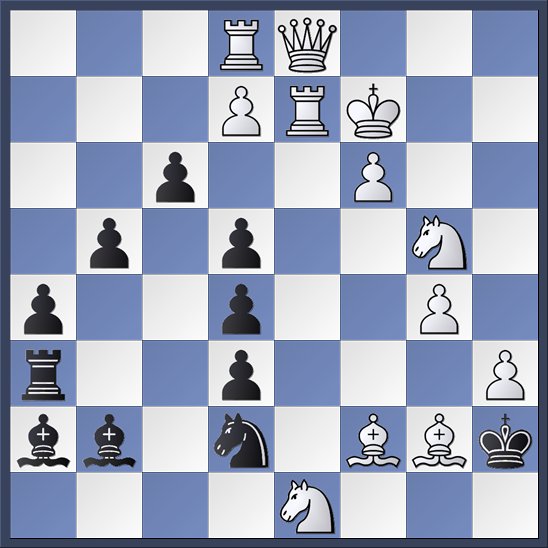
This move opens up the diagonal leading to black's king. White's plan is now to move his queen to that diagonal, giving checkmate. Towards that end, white is now threatening his first Bristol clearance. He will play the moves 2. Ra8 and 3. Qb8 mate, bringing about this position:
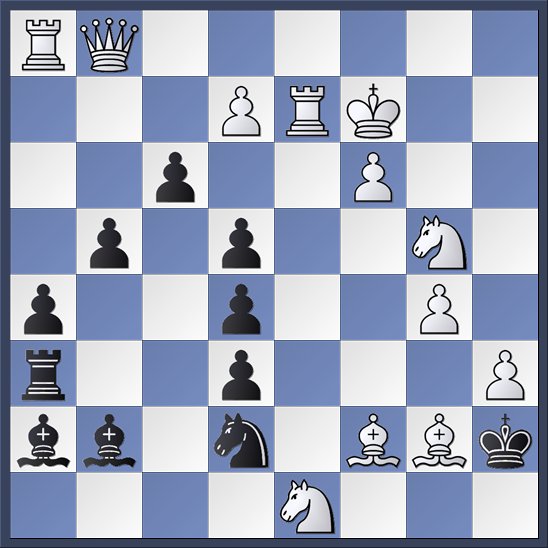
The rook clears the line for the queen by moving past the square b8. That's a Bristol!
How can black defend against the threat? Well, he can make various knight moves, but they all run into Ngf3 mate. So that's a non-starter. Therefore, his only hope is to bring his dark-squared bishop to a square from which it can block the check from the white queen. So, he might try 1. ... Rb3,
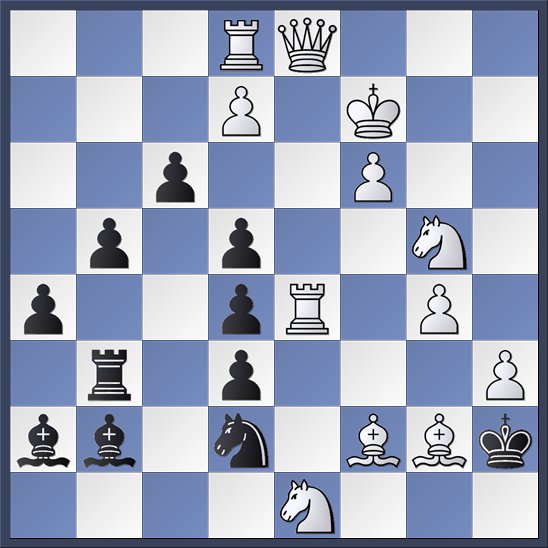
planning to follow-up with 2. ... Ba3. But now white plays a different Bristol. He will play 2. Re4, and if black takes with 2. ... dxe4, then white plays 3. Qe5 mate.
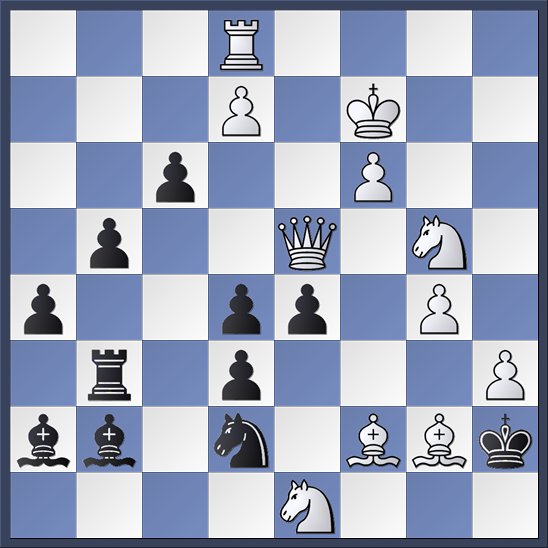
Notice that black's rook is blocking his bishop on a2, and that's why white is not in check in this position. That is also why white could not have started with 2. Re4 in the first place.
Black has two other defenses, and they illustrate the same idea.
For example, black could have played 1. ... Rc3, again planning to bring the bishop to a3. But now white replies with 2. Re3,
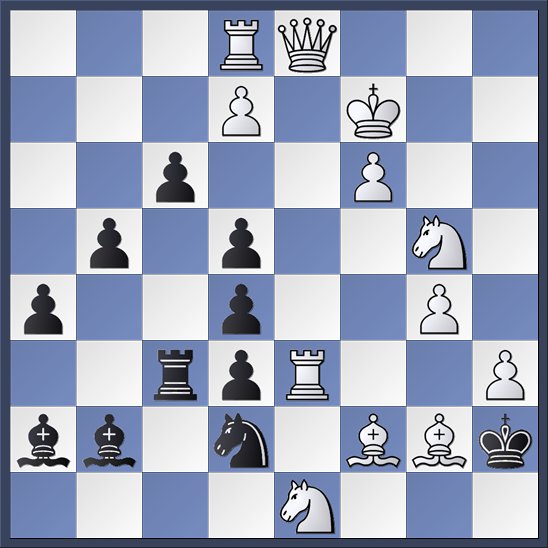
and since black's bishop on b2 is now blocked, 2. ... dxe3 will not stop white from replying with 3. Qe5 mate.
Finally, black can play 1. ... Bc3, intending 2. ... Bb4 or 2. ... Ba5, but I'm sure you see white's reply. Since the black rook on a3 is now cut-off, white can play 2. Re2.

The pawn capture with 2. ... dxe2 is no longer a defense against 3. Qe5 mate.
That's pretty nice, I think, and an exceedingly clever way of showing a combination of white Bristols coupled with black self-interference. And, if you look carefully, you might notice another old friend. The last two variations show first the black rook interfering with the bishop on c3, and then the bishop interfering with the rook on the same square. If you have been following this series for a while, you might recognize that as a Grimshaw.

While I wasn't that taken with this one at first, repeat viewing improves it. Of course, your explanations are the straw that stirs that drink. BTW why "Bristol"? Name of a composer maybe?
The origin of the term “Bristol” is explained in this article, by Vukcevich. This problem appears at the start of section four, and Vukcevich discusses some of the artistic plusses and minuses of the problem.
Thanks for the link. Certainly quite a bit to digest in this article!